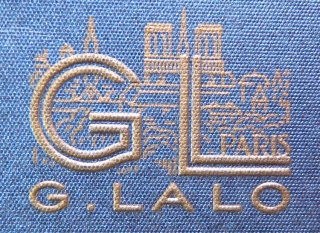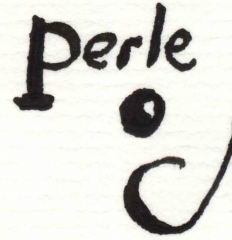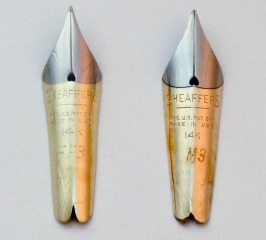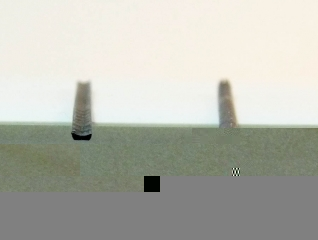A hasty trip by air and auto took me away last weekend. By my standards having a little over a week to plan a trip is hasty, especially if you are going to New York City. Two things presented themselves to make me consider such a trek: A father who seemed to be feeling better than ever and his new car.
My father has had a few years of ill health (and all the baggage being a wee bit of a hypochondriac can add to that) so when some medical tweaks suddenly made him regain some vigor I was impressed. Since my father is at his craziest when in high spirits his purchase of a Porsche was only modestly shocking. Certainly at his age he should do whatever makes him happy and I’m all for indiscriminate spending on fun things, after all look what I collect! These events were a sign that it was time to get my father out and about doing something fun and far away after such a long period of him protesting he couldn’t.
Even though the weekend after Thanksgiving was very close the free from work Friday made the time ideal for this road trip and I went about quickly (OK, I procrastinated) making plans for it. Soon I found myself flying into Buffalo, NY and taking the wheel to move on down the road for 7 hours into the heart of Manhattan. It wasn’t all bliss, though. The expensive SUV didn’t have an iPod aux jack even though the cheapest Kia comes with such gratis. A few hours of driving and I was looking (and looking and looking) for a decent book on CD at Cracker Barrel to fill time on the boring concrete ribbon of the interstate. Learning to use the complex interface for the rather misguided navigation system also tried my patience. It worked like the partially decommissioned HAL did in near the end of 2001 a space odyssey and I was surprised it didn’t start singing “Daisy” somewhere in New Jersey.
Miraculously we made it to our Midtown hotel only to find our room was not ready yet. Actually, It wasn’t ready for two hours which normally would have perturbed me if it wasn’t for the fact that I got comped free stuff every time I went to the desk to ask “ready yet?” In the end through judicious choice of a different receptionist every time I went up to put forth my inquiry I had accumulated 10 free breakfasts and 4 slips for drinks at the bar. That was 4 more breakfasts than we needed for our 3 day stay but they started being distributed en masse towards the end of my pilgrimage to bug them.
The goals for the weekend fell into two general categories: Things with my father and things without my father. The latter was intended to help me keep my sanity over this period. The former included eating and the opera which was the point for coming to the city and we certainly had a good deal of both.
The Opera was Il Trittico by Giacomo Puccini and I was astounded by the stage presentation and voices presented by the Metropolitan Opera. It was long but that was justified by the final of the three single act operas called Gianni Schicchi. This was a very funny comic opera that won the heart of this most ambivalent opera listener. My father loved it all and even made a friend in an old woman who I found him discussing Czechoslovakia with when I returned from intermission. Below are some images of the event for you to take a gander at. The sets and stagecraft utilized for this were incredible and even utilized some tricks of perception to make the stage seem deeper than in actuality. Yes, I did put a tie on for the event which I felt was appropriate even if I’m not sure I didn’t look a bit like a tourist.
My father is a fine person but he has weird outbursts of angry old man at times. I’m pretty good at putting my hand over his mouth when this happens but my biggest challenge was to keep him from getting into trouble. In the end I am happy to say only 4 times did I cringe in either embarrassment or shock. At the opera he grumped at someone who got in front of him in the elevator which is par for the course. After the performance when cabs were scarce he wanted me to take proactive physical action to obtain a cab before others who had seniority. I will say here that he has some trouble walking and didn’t like standing around but I have two strikes against me in cab warfare: I’m polite and I’m rather small. Lastly, there was his outburst at a hostess at a German restaurant we ate at and how his inexplicable insertion of his hand in another person’s waiting food. I’m not even going to give details about that little incident.
Around all the other activities I did get to eat (and eat). One of my favorite restaurants is Les Halles whose executive chef once was Antony Bourdain. I go there for the boudin noir which in English has the less romantic name of blood sausage. Certainly not something you’ll find at the local IHOP but totally tasty if you can get beyond the ingredient in its name. Some giant German sausages at the Heidelberg, a prickly pear margarita at Dos Caminos, and some great Belgian beer at the BXL Café got worked into the trip as well. However, the only pictures of my general wanderings are of the environs of Rockefeller center. It was lovely as usual and the big tree was…well…big.
So, that takes care of the boring part of this all. Now I can talk about one of my favorite topics: pens and friends. I made a beeline Saturday morning for Art Brown International Pen Store which is a great place if you are of the pen, stationary, and ink mindset. An enjoyable time for me is wandering and ogling the contents of such a place, as you can imagine. I was picking up a few presents and some other items when I came across bottles of the now discontinued Montblanc Racing Green ink. I bought a bottle since it was low priced and now seemingly rare. I’m only mentioning this since I think I’m going to give it away on this blog in the near future.
Sunday saw me off on my own to visit MOMA. I wanted to see the Tim Burton art exhibit being shown but found after getting my tickets that you were assigned to a time slot when they would let you see it. Of course that time was 3 or so hours later than the when I arrived so I never got to view it. Still, all was not lost as I got to see a really fabulous exhibit on the Bauhaus school in prewar Germany.
After my fill of Deutsch modernism I had a terrific lunch with Dominique James, a pen friend. He is one of the original members of the Fountain Pen Network-Philippines group which I’ve blogged about before. Since I’m a distant acquaintance of a couple FPN-P members I’ve known that he lived in NYC and thought I’d see if he might want to meet up. I’m always stunned that someone would be nice enough to spend their valuable time with me but he agreed. The lunch was very enjoyable with much talk about pens interspersed with some interesting information on the Philippines and cooking. I stayed longer than anticipated so I was off in a rush to my next appointment.
Two people willing to see me in one day doesn’t come along too often so I hustled uptown to the Columbia University area. There another wonderful person who I knew from online interaction, but never met in person, waited. I, of course, was quite late to meet her and which got me off on the “now you look like a dimwit” foot. Mia was far nicer than I had a right to expect and my tardiness was overlooked. I got a highly enjoyable tour of the local neighborhood and a few places of sustenance. Food makes me docile and easily led so it was a good thing that I had great crepes for a pre-dinner snack followed by some wonderful croissants from a local French bakery. After the tour and picture taking I had an experience which reminded me of being on a childhood play date with a friend. We spread out pens, pads, and inks and spend time trying it all out. It ended way too soon as I had to go to dinner with my father who had spent a great deal of time watching football that day (yes, that’s my father). I left taking with me the two best tamales I ever had.
While on that neighborhood walking tour I did get to see a fascinating Church and fountain. The Cathedral of St. John the Divine is very imposing and creepily gothic. In the gardens next to it is both the oddest and most interesting fountains I’ve ever seen. The Peace Fountain has a depiction of the battle of good and evil which contains (among other things) a giant crab, the sun, and an Angel. Not sure how to fathom what kind of aquatic/solar/heavenly battle is going on but it’s dramatic. Even more surprising was the albino peacock that wandered behind a fence on the grounds. That was the last thing I expected to see in New York City.
I think both my father and myself had a great trip to that little, sparsely populated island city. I’m hoping to get back again at least to check out more stationary stores and maybe catch another opera to try and stay awake during.






























































































